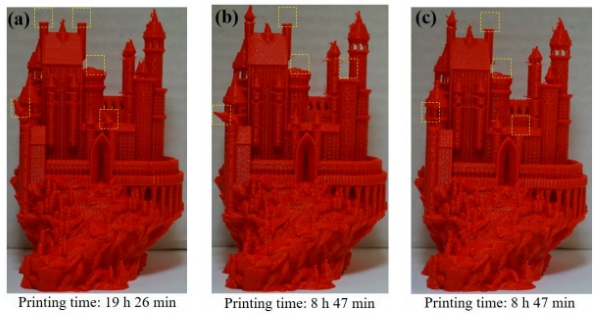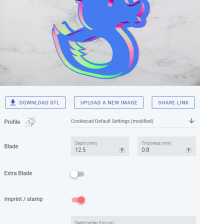- makeITcircular 2024 content launched – Part of Maker Faire Rome 2024Posted 2 weeks ago
- Application For Maker Faire Rome 2024: Deadline June 20thPosted 2 months ago
- Building a 3D Digital Clock with ArduinoPosted 7 months ago
- Creating a controller for Minecraft with realistic body movements using ArduinoPosted 7 months ago
- Snowflake with ArduinoPosted 8 months ago
- Holographic Christmas TreePosted 8 months ago
- Segstick: Build Your Own Self-Balancing Vehicle in Just 2 Days with ArduinoPosted 8 months ago
- ZSWatch: An Open-Source Smartwatch Project Based on the Zephyr Operating SystemPosted 9 months ago
- What is IoT and which devices to usePosted 9 months ago
- Maker Faire Rome Unveils Thrilling “Padel Smash Future” Pavilion for Sports EnthusiastsPosted 10 months ago
How to Speed Up 3D Printing By Exploiting the Cloud

Chinedum Okwudire, associate professor of mechanical engineering who directs U-M’s Smart and Sustainable Automation Research Lab, and his team have been experimenting with a new way of controlling 3D printers, where stepper motor commands (and other low-level control commands) are generated in the Cloud, rather than on a microcontroller.
Web-based wireless host platforms like 3DPrinterOS, Astroprint, OctoPrint, and Repetier Server allow you to control and monitor all aspects of your printer and print jobs right from your browser. However, these platforms control 3D printers by sending out G-codes from the Cloud to the printers, while assigning the low-level computations to a local controller.
Okwudire’s new idea is not too different from how video streaming works, and is a refined version of how OctoPrint, Astroprint and 3DPrinterOS work. It gives Wi-Fi enabled 3D printers access to advanced algorithms, running on the Cloud, without need for very powerful microcontrollers.
“The printer is located at the University of Michigan, Ann Arbor, while its stepper motor commands are calculated using an advanced motion control algorithm running on Google Cloud computers in South Carolina and Australia. The stepper motor commands are sent over the internet using the user datagram protocol (UDP) and buffered to mitigate transmission delays; checks are included to ensure accuracy and completeness of the transmitted data. All but one part printed using the cloud-based controller in both locations were hitch free (i.e., no pauses due to excessive transmission delays). Moreover, using the cloud-based controller, the parts printed up to 54% faster than using a standard local controller, without loss of accuracy.” Okwudire explains about his published work.
More information about this experimental work are available at 3ders.org.















